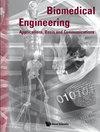A RISK CLASSIFICATION SYSTEM FOR ELDERLY FALLS USING SUPPORT VECTOR MACHINE
IF 0.6
Q4 ENGINEERING, BIOMEDICAL
Biomedical Engineering: Applications, Basis and Communications
Pub Date : 2022-03-08
DOI:10.4015/s101623722250017x
引用次数: 1
Abstract
Falls are a multi-factor problem that poses a serious risk to the elderly. Approximately, 60% of falls are caused by a number of known factors, including the environment, which accounts for approximately 25–45% of falling risk. Most of the remainder results from a lack of personal balance control. Falling can cause long-term disabilities in the elderly, sometimes resulting in lower quality of life, and is also associated with increased medical expenses and personal care costs. In this study, we developed a falling assessment system to evaluate and classify individuals into four graded falling risk groups. During the test, all subjects were required to wear a self-developed dynamic measurement system and to perform two balance tests: a “Timed Up and Go Test” and a “30-Second Chair Stand Test.” We obtained 29 characteristic parameters from the data recorded during these tests. Next, we performed group classification. Eigenvalues were normalized, and a principal component analysis (PCA) was performed. After identifying informative characteristic parameters, support vector machine (SVM) was used to classify individuals as members of one of the four falling risk groups. These included low-, moderate-, high-, and extreme-risk groups. Using unreduced data of the 29 characteristic parameters extracted from the two balance tests, the accuracy of the SVM classification in allocating individuals to the correct group was 97.5%. After PCA, the 29 characteristic parameters were reduced to eight principal components, and the SVM classification method using these eight principal components was 93.25%.基于支持向量机的老年人跌倒风险分类系统
跌倒是一个多因素的问题,对老年人构成严重的风险。大约60%的跌倒是由一些已知因素引起的,其中包括环境,它约占跌倒风险的25-45%。剩下的大部分是由于缺乏个人平衡控制。跌倒会导致老年人长期残疾,有时会导致生活质量下降,还会增加医疗费用和个人护理费用。在这项研究中,我们开发了一个跌倒评估系统,将个体分为四个等级的跌倒风险组。在测试过程中,所有受试者都需要佩戴自行开发的动态测量系统,并进行两项平衡测试:“计时起身测试”和“30秒椅子站立测试”。我们从这些试验中记录的数据中获得了29个特征参数。接下来,我们进行分组分类。特征值归一化,并进行主成分分析(PCA)。在识别信息特征参数后,使用支持向量机(SVM)将个体分类为四个下降风险组之一的成员。这些人群包括低、中、高和极端危险人群。使用从两次平衡测试中提取的29个特征参数的未约简数据,SVM分类将个体分配到正确组的准确率为97.5%。经主成分分析后,将29个特征参数约简为8个主成分,利用这8个主成分的SVM分类方法准确率为93.25%。
本文章由计算机程序翻译,如有差异,请以英文原文为准。
求助全文
约1分钟内获得全文
求助全文
来源期刊

Biomedical Engineering: Applications, Basis and Communications
Biochemistry, Genetics and Molecular Biology-Biophysics
CiteScore
1.50
自引率
11.10%
发文量
36
审稿时长
4 months
期刊介绍:
Biomedical Engineering: Applications, Basis and Communications is an international, interdisciplinary journal aiming at publishing up-to-date contributions on original clinical and basic research in the biomedical engineering. Research of biomedical engineering has grown tremendously in the past few decades. Meanwhile, several outstanding journals in the field have emerged, with different emphases and objectives. We hope this journal will serve as a new forum for both scientists and clinicians to share their ideas and the results of their studies.
Biomedical Engineering: Applications, Basis and Communications explores all facets of biomedical engineering, with emphasis on both the clinical and scientific aspects of the study. It covers the fields of bioelectronics, biomaterials, biomechanics, bioinformatics, nano-biological sciences and clinical engineering. The journal fulfils this aim by publishing regular research / clinical articles, short communications, technical notes and review papers. Papers from both basic research and clinical investigations will be considered.
 求助内容:
求助内容: 应助结果提醒方式:
应助结果提醒方式:


